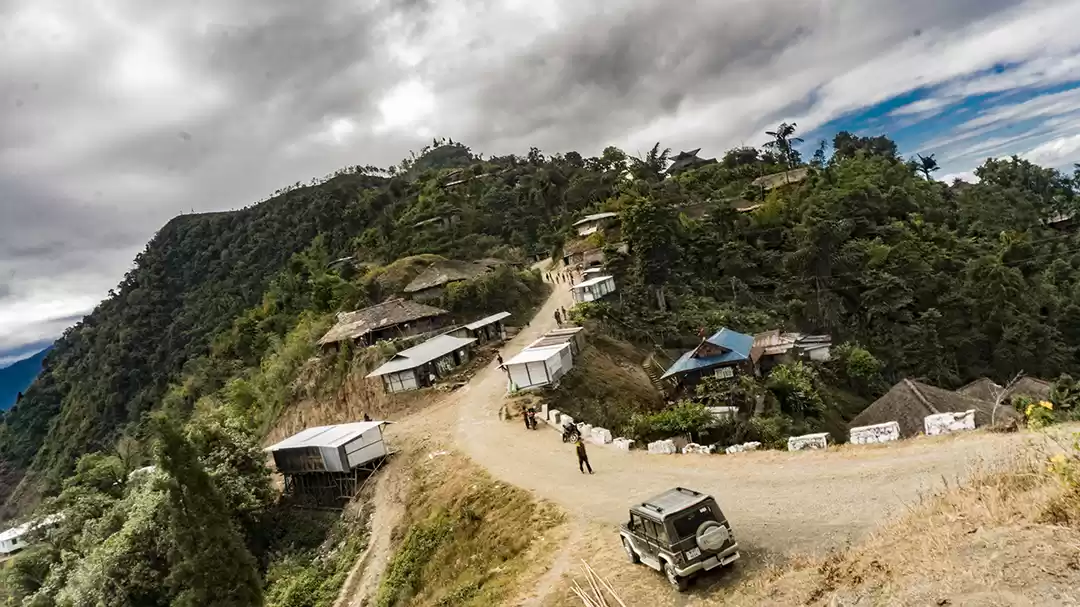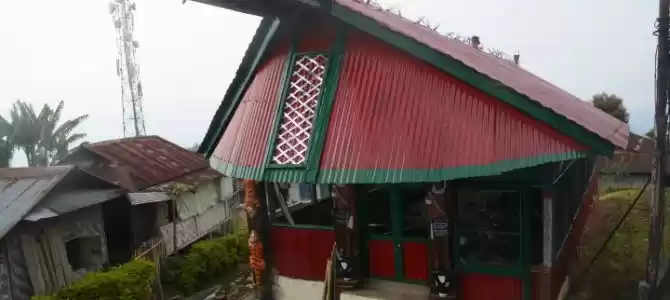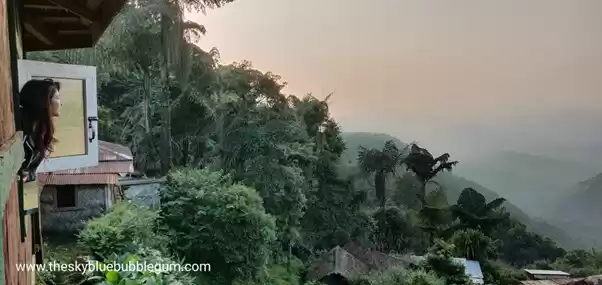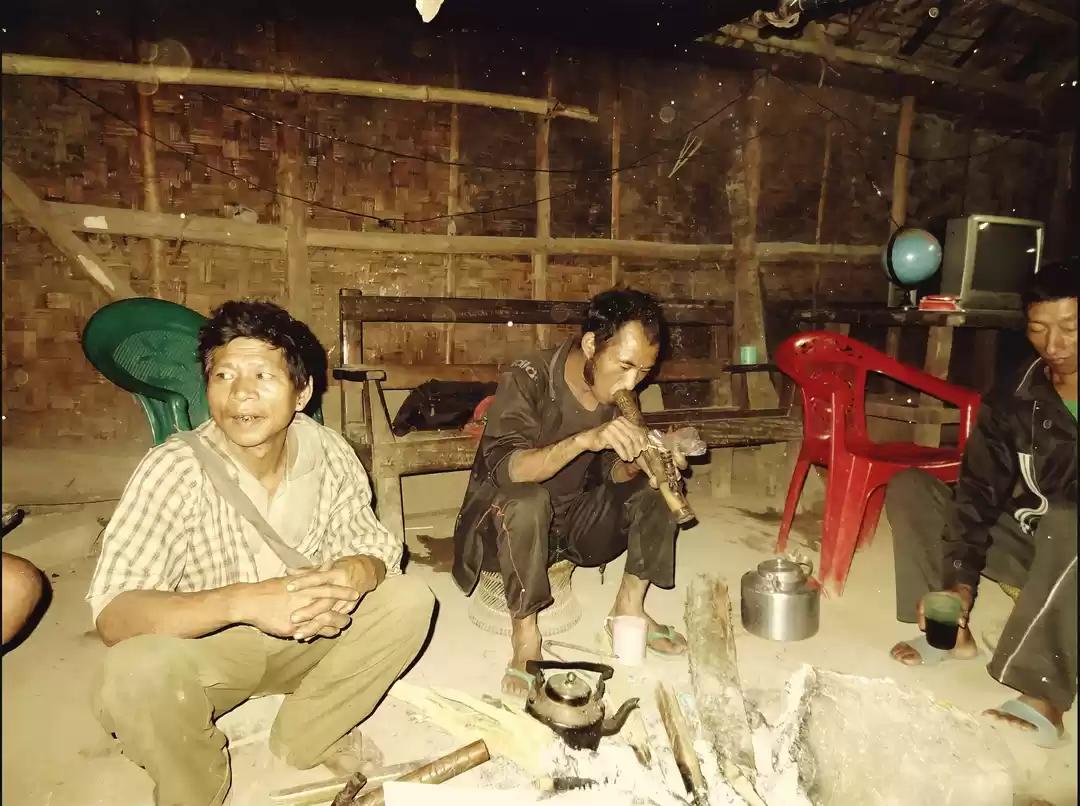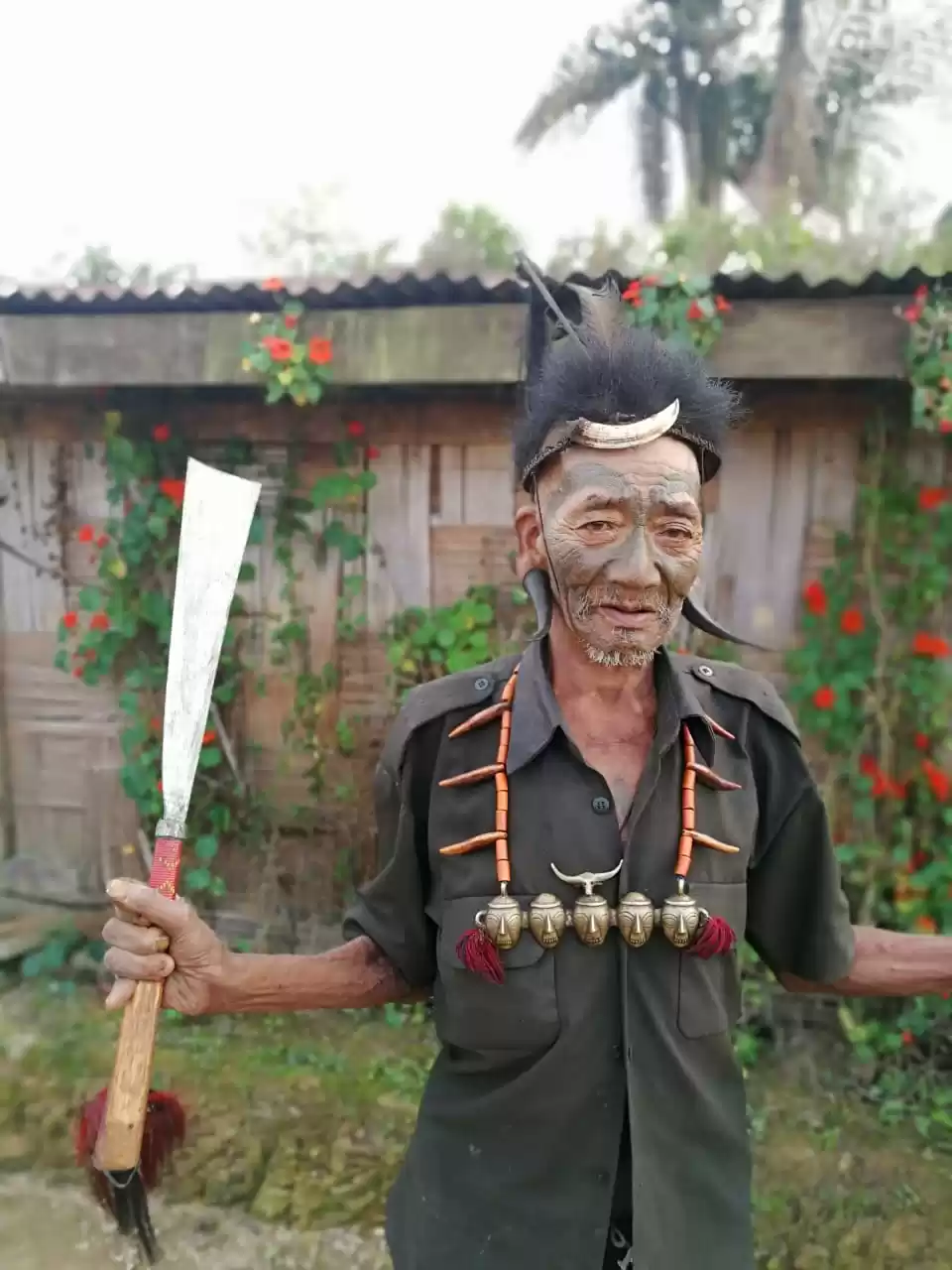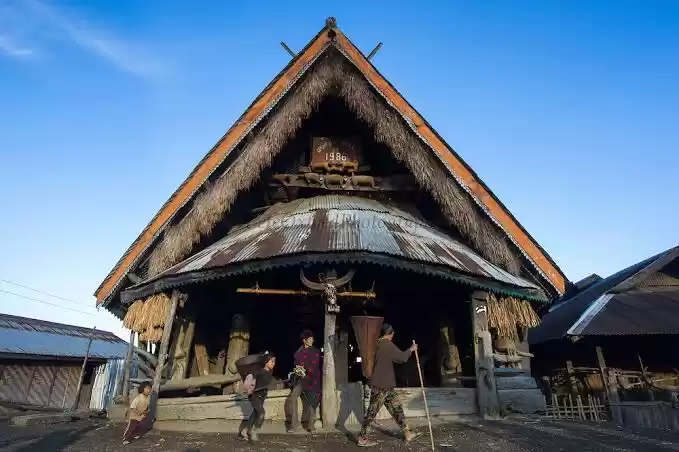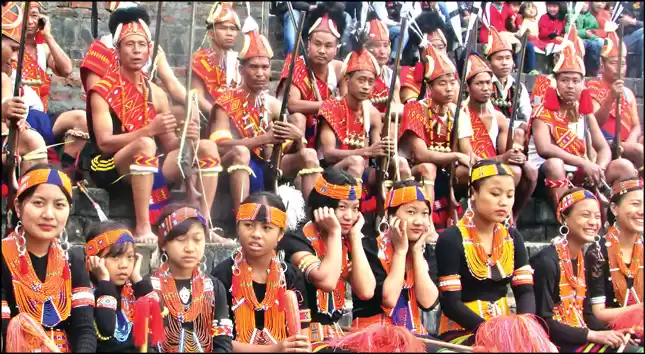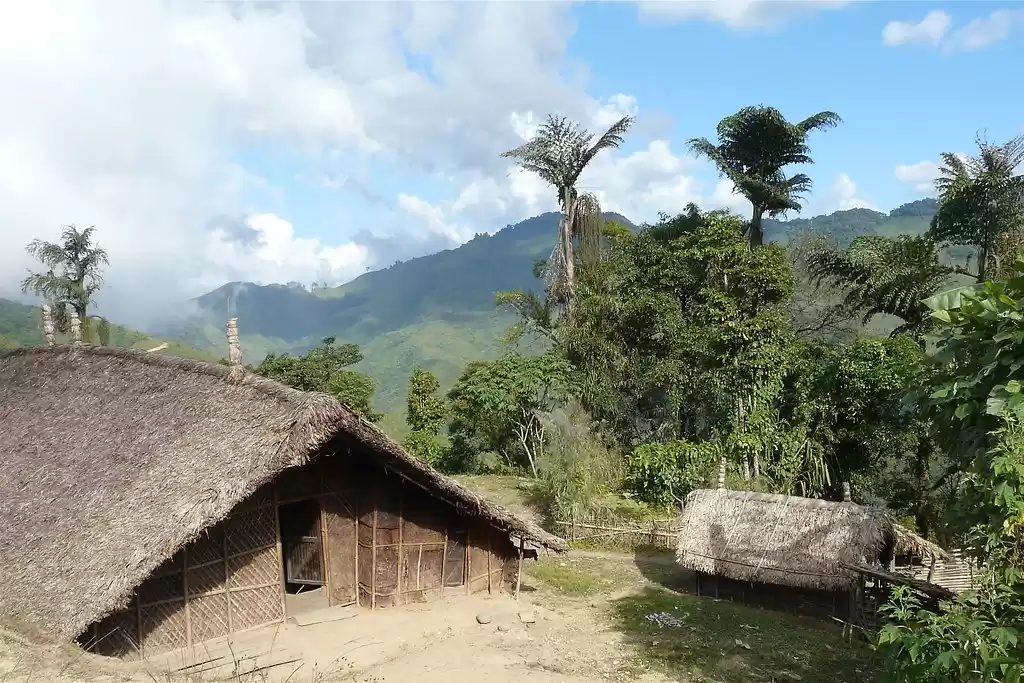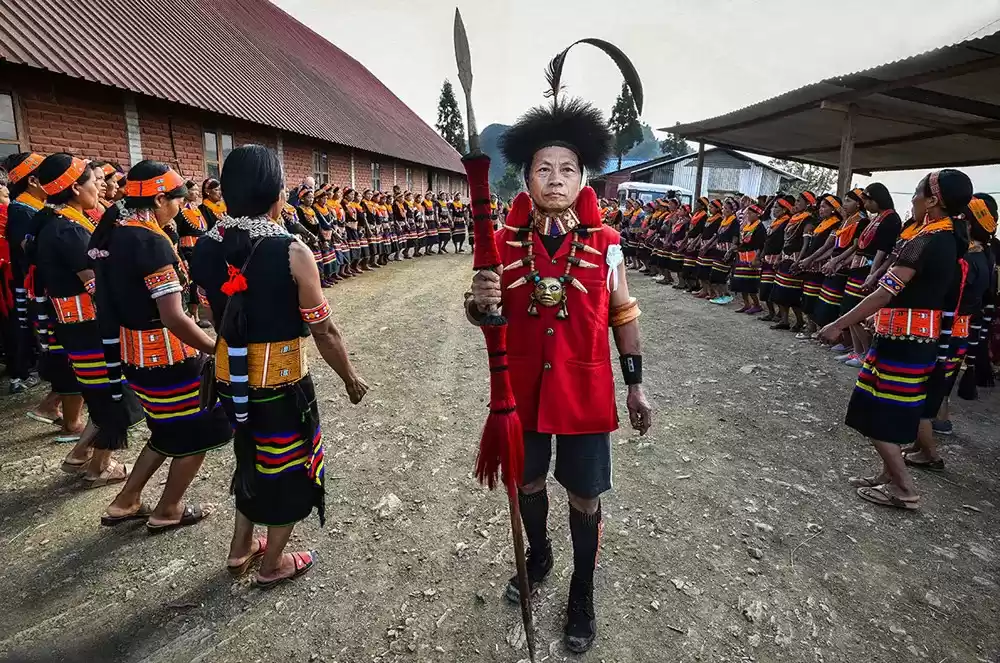
In the Mon district of Nagaland, a remote village known as Longwa borders Myanmar. Dividing the village into two parts, one falling in India and the other perched in Myanmar, Longwa allows you to be in two places at once. Longwa abounds in primeval beauty and tribal culture. Unless you arrive at this wild east of India one will not realize the joy of hopping between borders with no visa.
Other than location, a distant culture sets the village apart

The two countries share the village of Longwa and the international border actually passes through the village chief’s house. They’re the only Indian tribe to have legal dual citizenship of both India and Myanmar and a lot of them vote in both elections. Unusual as it may sound, some households have their bedroom in India and kitchen in Myanmar. Thatched straw roof and woven bamboo facade make for a traditional Naga house and the interiors have quirky artifacts made of skulls and animal bones. Such artifacts are proud displays of valor and speak loudly of a fearful tradition outlawed, not very long ago.
Longwa is home to the last headhunters
Konyak tribes of Longwa are marked in history for their fierce headhunting tradition. They resolved territorial fights between rival tribes and villages only through warfare. That said, Konyaks were feared for their headhunting skills. The village has the angh, or the dynastic King having 60 wives and reigns over 70 villages across Myanmar and Arunachal Pradesh. The brass skull necklaces are identity-defining accessories, each skull symbolizing the heads they've cut in their lifetime.
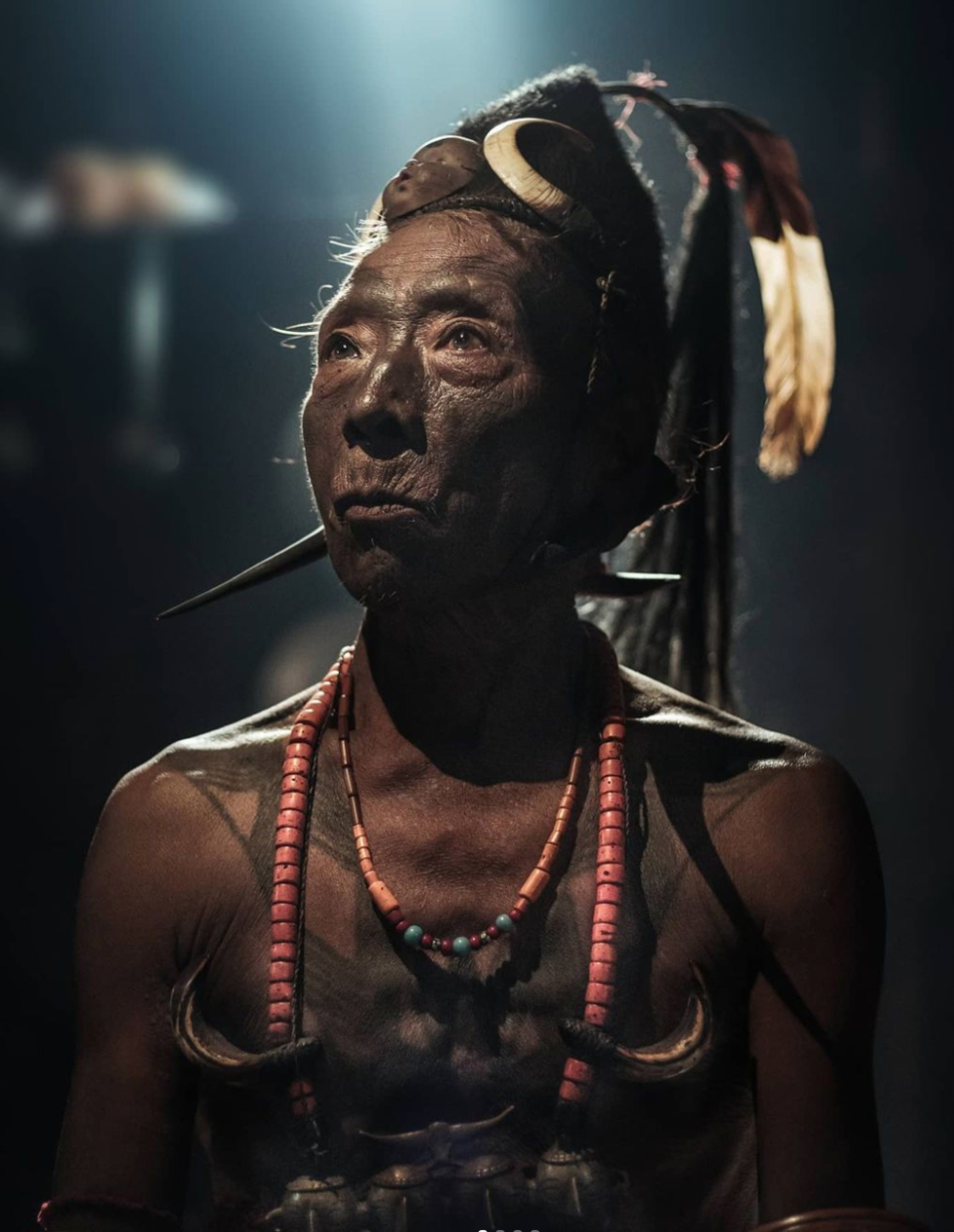
The remaining clan of headhunters flaunt ear pieces made of animal horns and war hats made of hunted wild pigs’ horns, hornbill feathers, and wild bear or goat hair. They still carry knives they carried to kill. Most have their faces and chest covered in ritualistic tattoos. A one-on-one with them is a peak inside their lives lived, much seen, or heard in fiction.
The government banned the practice of head-hunting in the 1960s when the villagers found Christianity broached by travelling missionaries. The next gen Konyaks have joined the Myanmar army and taken on a modern way of life. But headhunters and their tales of valour live through traditions and festivals one such is the much acclaimed Hornbill festival — tribesmen across ages unearth their headhunting times, war dancing with guns and knives and some of the enemy skulls buried deep in the forests show up in this annual jamboree.
With the COVID-19's daily counts improving in India, the state government prepares for the festival, held annually in December, 2021. During, the course photographers across the world come to cover this unique frenzy of life and colour.

How to get to Longwa?
Border Roads Organisation has worked well on the road connectivity and hence the distance between Guwahati to Mon takes a good 433 km approx (6-7 hrs) by road. Longwa is at a distance of 357 km from Kohima via Dimapur and 280 km from Dimapur.
Longwa's remoteness, unfamiliar culture, and tradition make us feel like a perpetual outlander and yet unfolds incredible India's cultural diversity which I say is unfathomable — giving us more reason to travel.
To read more stories on off-grid travel, cities, food, nature, and adventure follow me on Tripoto and Instagram.















